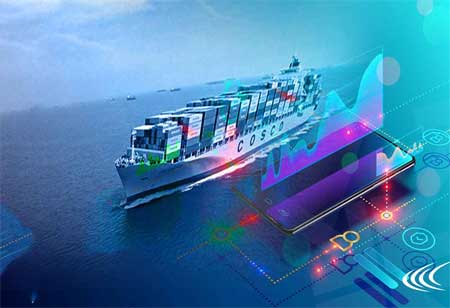THANK YOU FOR SUBSCRIBING
THANK YOU FOR SUBSCRIBING

By
Logistics Transportation Review | Thursday, October 23, 2025
Stay ahead of the industry with exclusive feature stories on the top companies, expert insights and the latest news delivered straight to your inbox. Subscribe today.
FREMONT, CA: Flatbed transportation is crucial in logistics and shipping, particularly for transporting oversized, irregularly shaped, and heavy goods. The future of flatbed transportation is poised for significant changes driven by technological advancements, regulatory shifts, and market demands. Autonomous technology is set to revolutionize the flatbed transportation sector. Self-driving trucks can enhance efficiency by reducing human error, increasing operational hours, and optimizing fuel consumption. Although regulatory and infrastructure challenges remain, these advancements promise to reduce labor costs and improve safety.
Telematics and IoT are transforming fleet management. Telematics systems provide real-time data on vehicle location, performance, and driver behavior, enabling better route planning and maintenance scheduling. Flatbed transportation means better handling of high-value and sensitive cargo, reducing the risk of damage and improving customer satisfaction. Environmental concerns and stricter emissions regulations are driving the adoption of electric and hybrid trucks. While the technology is still developing, several manufacturers invest heavily in electric truck models that can handle heavy loads typically associated with flatbed transportation.
The vehicles promise lower operating costs and reduced environmental impact, aligning with global sustainability goals. Governments worldwide are implementing stricter emissions standards to combat climate change. It will likely accelerate the shift towards cleaner transportation options in the flatbed sector. Investments in infrastructure, particularly in ports, highways, and railways, are crucial for the future of flatbed transportation. Enhanced infrastructure supports more efficient and reliable logistics operations. Companies are already making strides in developing autonomous trucks, which could be integrated into flatbed fleets soon.
Governments and private sectors are expected to invest heavily in upgrading infrastructure to support growing trade volumes and adopting new technologies like autonomous and electric vehicles. Flatbed transportation, traditionally used for large and industrial goods, is now being adapted to meet the needs of the e-commerce sector. Innovations in loading and unloading technologies, like automated and modular flatbeds, can significantly reduce handling times, meeting the high-speed demands of modern consumers. Ensuring that cargo is securely fastened is paramount in flatbed transportation.
Innovations in load securement technologies, such as automated tie-down systems and smart straps with integrated tension sensors, enhance safety and efficiency. The technologies help prevent accidents, reduce manual labor, and ensure compliance with safety regulations. Safety remains a top priority in the transportation industry. The technologies protect drivers, safeguard cargo, and reduce the risk of costly accidents. Strategic partnerships and financial planning will be crucial to navigate this transition. The push towards sustainability presents both challenges and opportunities. Achieving the goals requires careful planning and embracing change.
Autonomous vehicles, telematics, electric trucks, and advanced load securement technologies promise to enhance efficiency, safety, and sustainability. The innovations come with challenges, including significant initial investments and the need for a skilled workforce.
I agree We use cookies on this website to enhance your user experience. By clicking any link on this page you are giving your consent for us to set cookies. More info





